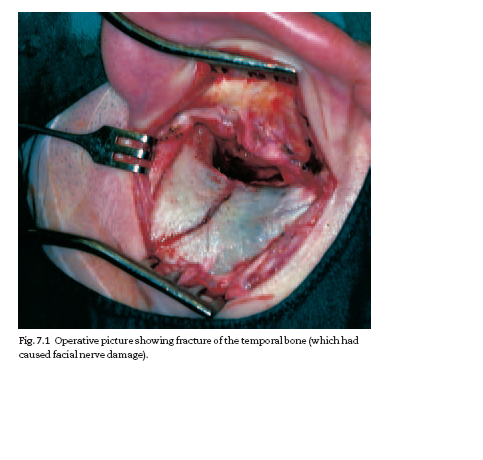
Injury of the Tympanic Membrane
The tympanic membrane, being deeply placed, is well protected from injury.
Damage does occur, however, and may be direct or indirect.
Direct trauma is caused by poking in the ear with sharp implements,
such as hair grips, in an attempt to clean the ear; it is caused by syringing or
unskilled attempts to remove wax or foreign bodies.
Indirect trauma is usually caused by pressure from a slap with an
open hand or from blast injury; it may occur from temporal bone fracture
Welding sparks may cause severe damage to the tympanic membrane.
SYMPTOMS
1 Pain, acute at time of rupture, usually transient.
2 Deafness, not usually severe, conductive in type. Cochlear damage may
occur from excessive movement of the stapes.
3 Tinnitus, may be persistent—this is cochlear damage.
4 Vertigo, rarely.
SIGNS
1 Bleeding from the ear.
2 Blood clot in the meatus.
3 A visible tear in the tympanic membrane (Fig. 7.2).
TREATMENT — leave it alone
1 Do not clean out the ear.
2 Do not put in drops.
3 Do not syringe.
If the injury has been caused by direct trauma, treat with prophylactic
antibiotics. In other cases, give antibiotics if there is evidence of infection
supervening.
In virtually every case, the tear in the tympanic membrane will close
rapidly. Do not regard the ear as healed until the hearing has returned to normal.


